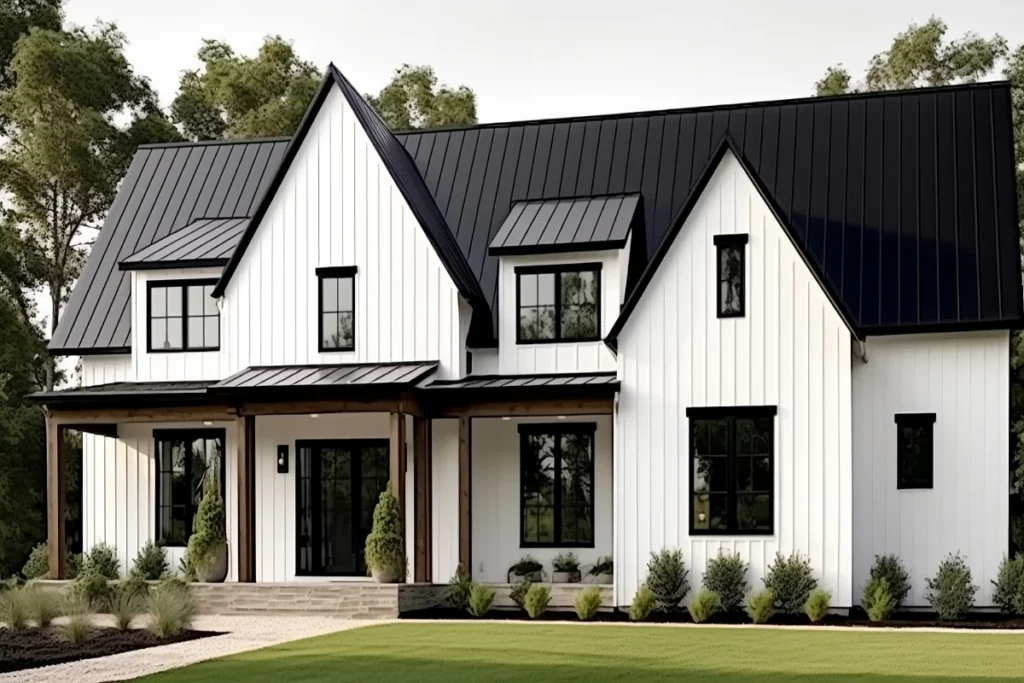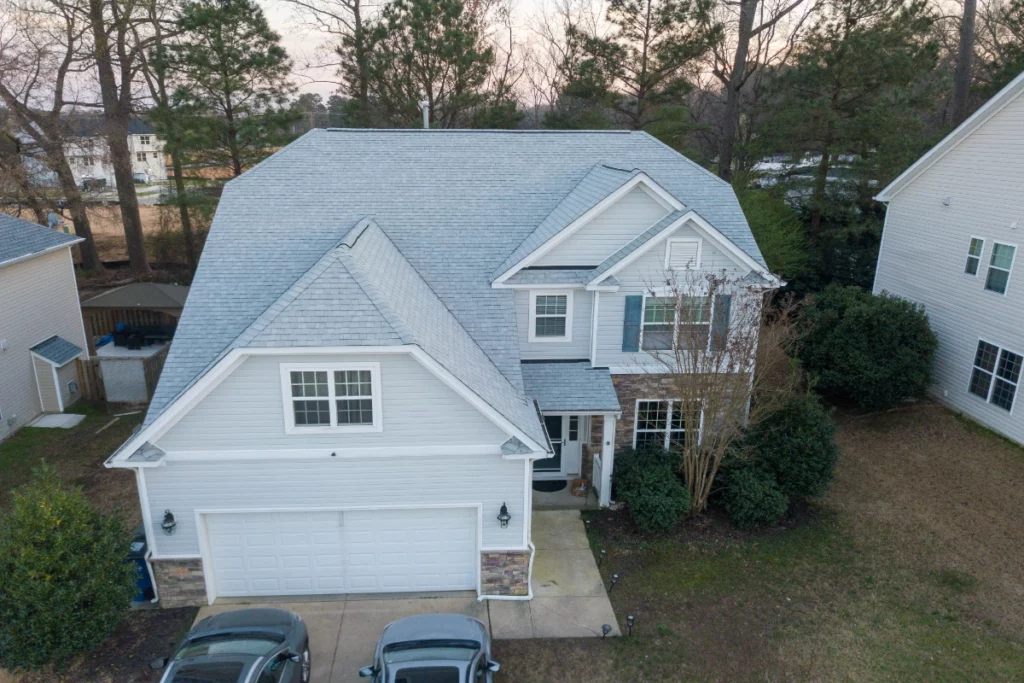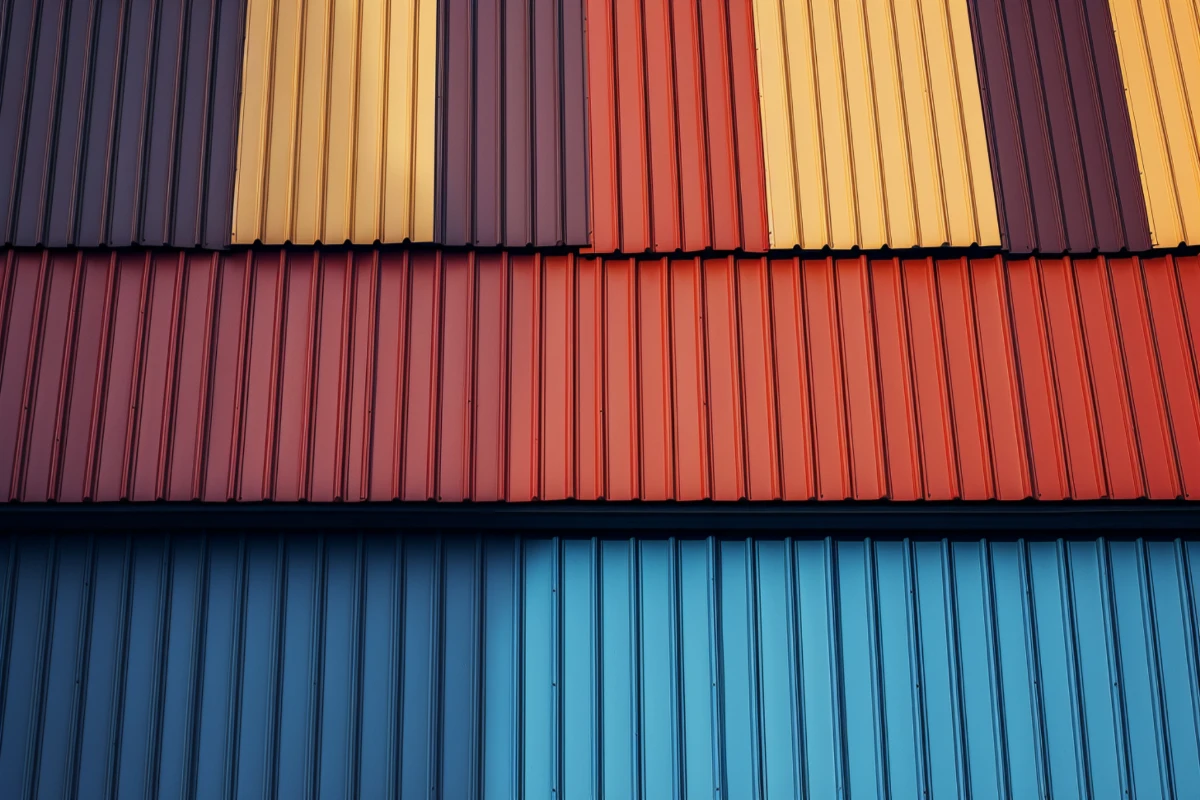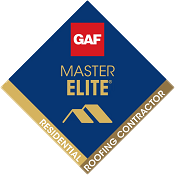Today’s roofing materials come in a wide variety of colors. The spectrum of roof color options ranges from traditional black, brown, and gray to more vibrant hues like blue, red, and green. Lighter colors such as beige, light blue, or white are also popular choices.
Each of these color choices can significantly affect the energy efficiency of a building. This is especially important in the Sunshine State and other parts of the southeastern United States, where heat and bright sunshine are common.
Light vs. Dark Roofs: How Does Roof Color Impact Energy Efficiency?
Darker colors, known for their heat-absorbing properties, can cause a noticeable increase in indoor temperatures during sun-bathed days. This thermal absorption can translate into higher cooling costs as air conditioning systems work harder to maintain comfortable indoor temperatures.
Conversely, lighter colors, with their reflective properties, bounce back a greater proportion of sunlight. This action helps maintain a cooler building interior, subsequently reducing the dependence on air conditioning and lowering energy expenditure.
However, it’s essential to take into consideration other factors that work in tandem with roof color to shape a building’s energy efficiency. These include local climate conditions and the specific material used for the roof.

Unraveling the Science: How Does Roof Color Impact Energy Efficiency?
The color of your roof influences energy efficiency through two primary mechanisms:
- Solar Reflectance: Measured as a percentage, solar reflectance indicates the proportion of sunlight a surface is capable of deflecting. Light-colored roofs, boasting higher solar reflectance values than their dark-colored counterparts, reflect a larger share of sunlight. This characteristic helps keep your home cooler during the sweltering summer months.
- Thermal Emittance: This refers to the capacity of a surface to release absorbed heat. Light-colored roofs exhibit lower thermal emittance than dark-colored ones, which means they emit a lesser amount of absorbed heat into the atmosphere. This trait further contributes to maintaining cooler indoor temperatures during hot weather.
Benefits of Light-Colored Roofs
Studies have shown that energy efficient roof colors can significantly reduce cooling costs in the summer. For example, a study by Florida Power and Light found that, while dark gray roofs reflect about 8% of the sun’s heat, white shingle roofs reflect 25%.
Another study by the Lawrence Berkeley National Laboratory found that a white roof would stay about (55°F) cooler than a gray roof on a bright sunny day. This can help to reduce the amount of heat that enters your home, which can lead to significant energy savings.
In addition to energy savings, light-colored roofs offer a number of other benefits, including:
Reduced Heat Island Effect
The heat island effect is a phenomenon in which urban areas are warmer than surrounding rural areas. This is because urban areas have more pavement and buildings, which absorb and retain heat. Light-colored roofs can help to reduce the heat island effect by reflecting sunlight away from buildings.
Extended Roof Life
Light-colored roofs are less likely to absorb heat and expand and contract, which can lead to premature wear and tear. As a result, light-colored roofs can last longer than dark-colored roofs.
Improved Curb Appeal
Light-colored roofs can make your home look more modern and attractive.Other Factors to Consider When Choosing a Roof Color
In addition to energy efficiency, there are a number of other factors to consider when choosing a roof color for your home, including:
- Home style. The color of your roof should complement the style of your home.
- Neighborhood. It’s also important to consider the colors of the roofs in your neighborhood. Some homeowners may want to stand out, while others prefer to match the other homes in the area.
- Personal preference. Ultimately, the choice of roof color is a personal one. Choose a color that you like and that you think will look good on your home.

Other Factors That Impact Your Roof’s Energy Efficiency
While roof color is an important factor in determining energy efficiency, there are other elements that can also play a role. These include:
Roof Material
The material of your roof affects how well it can absorb or reflect sunlight. Metal roofs, for example, are highly reflective and thus can help keep your home cool. On the other hand, materials like asphalt or wood absorb more heat, leading to increased indoor temperatures.
Insulation
Good insulation is critical to maintaining a comfortable indoor temperature. It acts as a barrier, reducing the amount of heat that enters or leaves your home. Poor insulation can undermine the energy efficiency benefits of roof color.
Ventilation
Proper roof ventilation ensures that hot air does not get trapped in your attic, contributing to a cooler overall home temperature. Without adequate ventilation, your cooling system may have to work harder, leading to increased energy costs.
Roof Design
The design of your roof, including its shape and orientation, can also impact energy efficiency. For instance, roofs with a steeper slope may be more effective at reflecting sunlight, particularly in summer months.
Conclusion
The color of your roof can have a significant impact on your home’s energy efficiency. Light-colored roofs are the most energy-efficient choice, especially for homeowners who live in hot climates. However, it’s important to consider your climate, the other materials that your home is made of, and your personal preferences when choosing a roof color.
If you’re considering a new roof, be sure to consult with a professional roofing contractor to get more information about the different roof colors available and which color is best for your home.
The Best Roofing Company in Florida, Sarasota, Lakeland, and Georgia
Stronghold Roofing & Solar is here to help if you need assistance deciding on the most energy-efficient roof for your home. Our team has the knowledge and experience to explain your potential energy savings with roofing and help you make the best choice for your home and your budget.
Contact us today to discuss a roof replacement or any other roofing services.
FAQ’s – Best Roof Colors for Efficiency
According to studies, light-colored roofs can reduce cooling costs by up to 20%, making them a highly effective choice for homeowners looking to save on energy bills.
The material, insulation, ventilation, and design of your roof also play a role in its energy efficiency. It’s important to consider all of these factors when choosing a roof color.
No, other factors such as home style, neighborhood, and personal preference should also be taken into account. Ultimately, the best roof color is one that meets both your aesthetic preferences and practical needs. Overall, light-colored roofs offer a range of benefits and can be an excellent choice for homeowners looking to improve energy efficiency.
Your roof is one of the most important parts of your home, so when it comes time to choose a new one, there are a variety of factors to consider, including the type of material.










